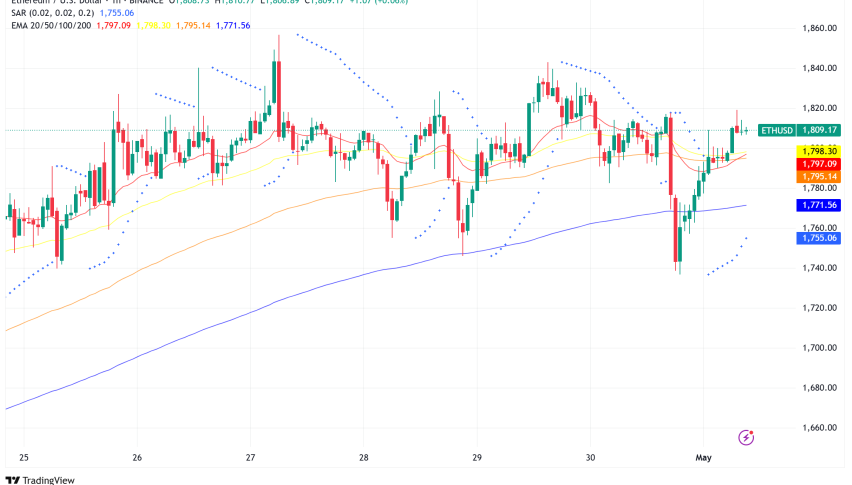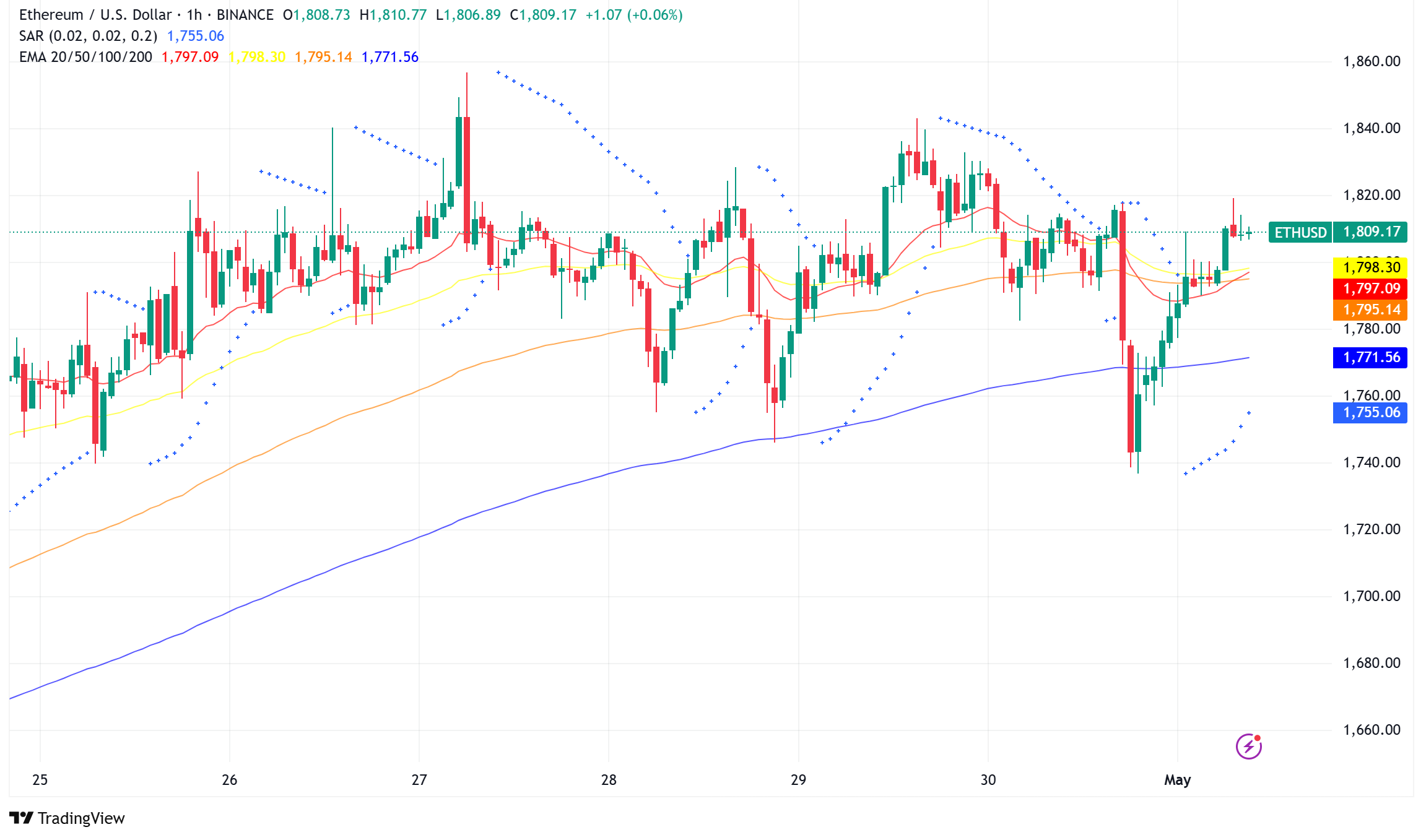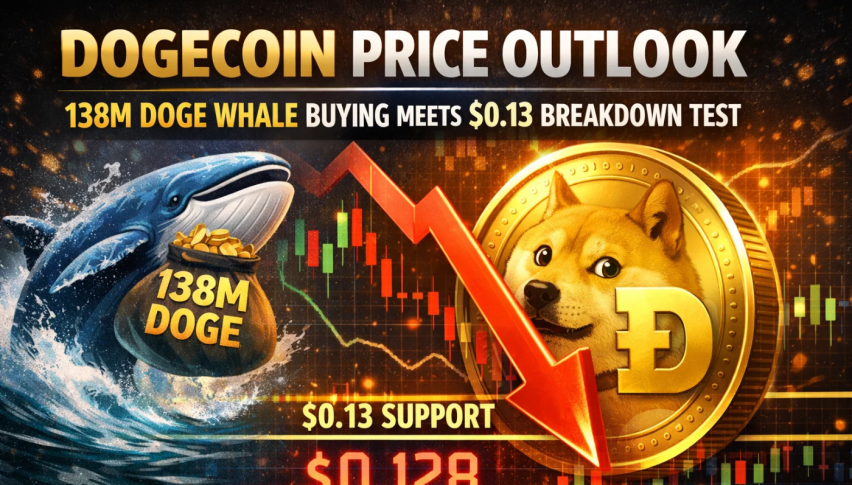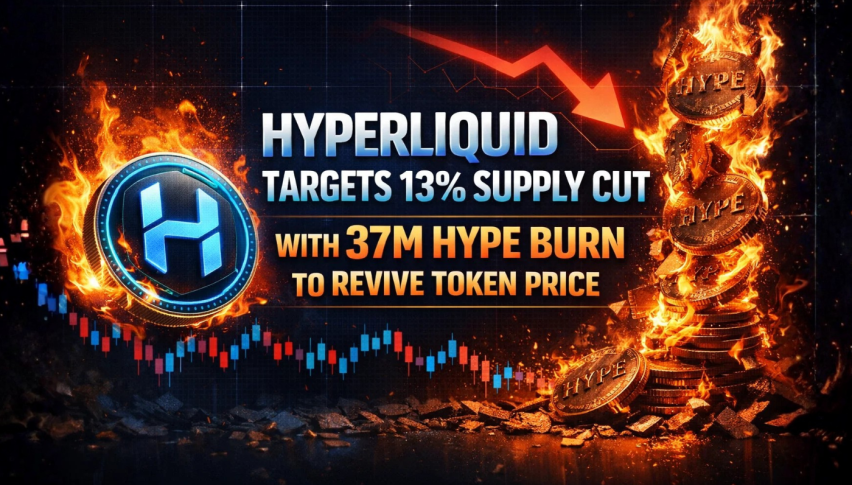Ethereum Nears Crucial Pectra Upgrade, Bullish Signals Emerge Below $1900
As Ethereum holds steady around $1,800, several emerging bullish signals and the upcoming Pectra upgrade may finally trigger a convincing

Quick overview
- Ethereum is currently trading around $1,800, with the upcoming Pectra upgrade on May 7 expected to catalyze a price rally.
- The Pectra update will enhance scalability, user experience, and staking efficiency, potentially attracting more institutional investors.
- Technical indicators suggest Ethereum may be forming a bottom, with a Dragonfly Doji pattern signaling a possible reversal in momentum.
- Despite some caution in the derivatives market, there is growing optimism among traders regarding Ethereum's current value and potential for future gains.
As Ethereum ETH/USD holds steady around $1,800, several emerging bullish signals and the upcoming Pectra upgrade may finally trigger a convincing rally.

Ethereum Pectra Upgrade: A Potential Catalyst for Price Action
Scheduled on May 7, the forthcoming Pectra update could act as the trigger to release ETH from its extended consolidation period at last. Emphasizing three critical areas—scalability through layer-2 solutions, user experience enhancements, and staking efficiency improvements—this release brings 11 Ethereum Improvement Proposals (EIPs).
Enhanced User Experience and Fee Structure
EIP-7702 is one of the most important improvements since it lets conventional user wallets momentarily operate as smart contracts. This opens important capabilities such token other than ETH gas fee payment capability and fee sponsorship.
Particularly in gaming, payments, and mobile apps where bad UX has been a constant impediment to popular acceptance, these developments could drastically reduce entrance barriers for non-technical users. Crucially, these developments won’t lessen ETH’s basic function in the network since validators will still pay fees in ETH at the protocol level.
Institutional-Friendly Staking Improvements
Regarding staking, various EIPs will bring significant modifications that would be interesting to institutional players. Validators will be allowed to stake up to 2,48 ETH (up from the present 32 ETH maximum), and both onboarding and leave procedures will get more simplified.
Given recent claims of failing institutions selling their ETH interests, these developments are especially noteworthy. The improved staking mechanism could revive institutional involvement, therefore locking in more ETH in validator nodes and hence lowering the circulating supply.
Historical Technical Patterns Suggest Bottom Formation
With no movement over the previous 24 hours, Ethereum (ETH) has been somewhat flat recently and trades at roughly $1,800. Although ETH has underperformed relative to other big cryptocurrencies in the current market cycle, multiple technical signs point to this underperformance maybe reversing shortly.
Most importantly, ETH has developed a rare monthly Dragonfly Doji candlestick pattern—the same form that followed its unprecedented 25,000% climb during the 2017 bull cycle. Usually indicating a rejection of lower prices and the possible recovery of bullish momentum, this pattern is typified by a long lower wick with either little to no upper wick and a close near its opening level.
Ethereum is also retesting its long-term parabolic support zone, which historically has acted as a launching pad for fresh uptrends. “In every cycle, this zone triggers a reversal — and this time is no different,” one researcher said. Early 2017’s ETH bounced from this same trendline drove a vertical climb from roughly $6 to $1,400.
MVRV Z-Score Indicates Undervaluation
On-chain data supports a comeback of Ethereum even more. Key indicator of market tops and bottoms, the MVRV Z-Score has returned within its historical accumulation zone. In past cycles, entrances into this zone matched market bottoms in late 2018, March 2020, and mid-2022—all of which preceded notable rallies.
This statistic implies that Ethereum might be underpriced given the present price levels, thereby offering a good starting point for investors. This on-chain indicator’s alignment with optimistic technical patterns reflects the configuration observed prior to Ethereum’s most significant historical price rises.
Ethereum Price Prediction
Notwithstanding these encouraging signs, data on the derivatives market shows that professional traders are wary of ETH’s immediate price future. Consistent below the neutral barrier, the ETH monthly futures premium points to modest excitement for leveraged bullish plays.
But data on the options market shows that traders are growing more at ease with ETH’s present value. Put (sell) options, which indicate less worry about additional downside risk at current market levels, are now trading at levels comparable to call (buy) options unlike in past times.
Technically ETH is ready for a climb above the critical $1,840 resistance level. With more possibility to hit $2,000 in the near future, a successful breakout might open the road towards the $1,920 mark. On the other hand, failing to surpass $1,840 might cause a retest of support at $1,760 or perhaps $1,735.
The Bigger View: Ethereum’s Competitive Scene
With its market capitalization momentarily dipping in April 2025 below the total value of its four biggest rivals—Solana, BNB, Cardano, and Tron— Ethereum’s market situation has suffered. ETH has subsequently recovered, though, to take front stage with a market capitalization of around $217 billion.
Ethereum has unable to replicate Solana’s integrated user experience or Tron’s leadership in the stablecoin market even when it leads in total value locked (TVL). The forthcoming Pectra update seeks to solve some of these competitive shortcomings, therefore reducing the gap with rivals.
- Check out our free forex signals
- Follow the top economic events on FX Leaders economic calendar
- Trade better, discover more Forex Trading Strategies
- Open a FREE Trading Account


